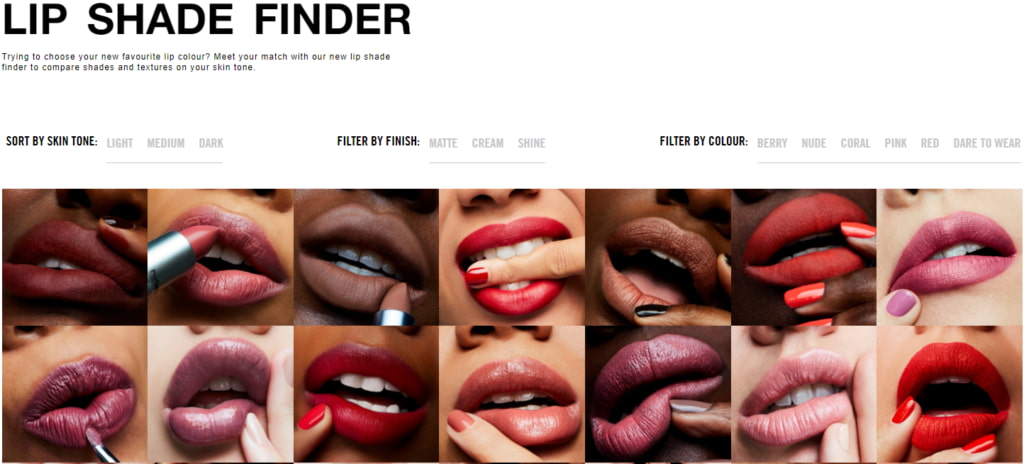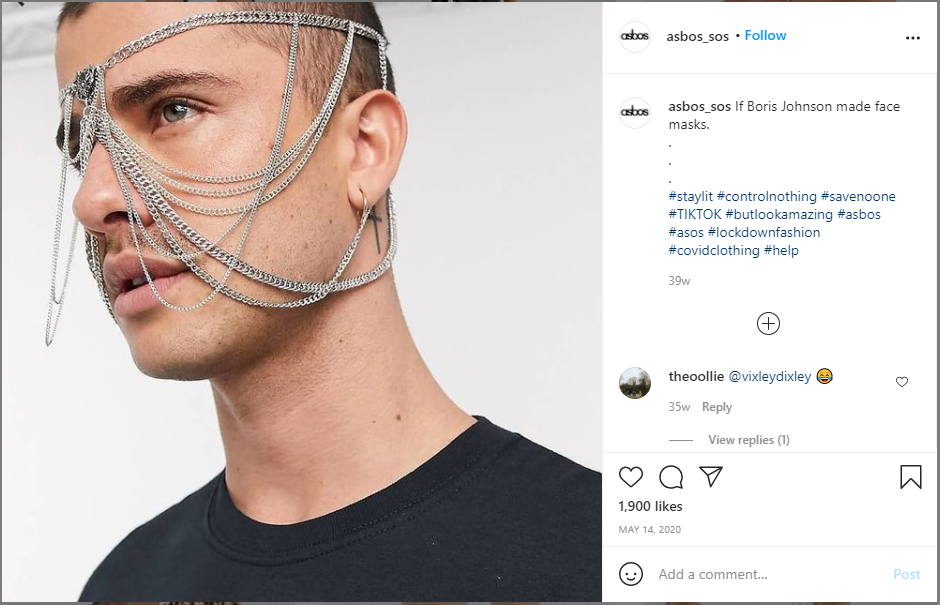
Link building for ecommerce is notoriously tricky. You’re up against increased competition and cautious prospects, and with a comparative lack of link-worthy web pages on your side, it can seem a gargantuan task.
But difficult doesn’t mean impossible.
We’ve talked in the past about the power of guest posting as a link building tactic (it’s one of the things we’re best at).
But in this piece, we look at tactics beyond guest posting that you can use to effectively build links for your ecommerce brand.
Offer a useful and relevant tool for free
Linking back to product pages is hard. Get it wrong, and it looks spammy and unnatural.
While it is possible to build links to product pages with care and precision (as outlined here by our own Head of Outreach, Laura Slingo), it’s far easier to encourage people to link to your ecommerce site by offering something free, shareable, and value-adding instead.
Take MAC Cosmetics, for instance.
The beauty brand offers a free Virtual Try On tool, which lets customers virtually ‘try on’ different shades of lipstick or eyeshadow with augmented reality. Simply choose a product, upload a selfie or use your camera, and find the colour or shade that suits you.

Image MAC Cosmetics
It’s free, so there’s a low risk of it being deemed spammy, and it offers genuine (and relevant) value to its prospective audience. As a result, host sites will be far more willing to link out to it.
It’s far easier to build links to a genuinely useful tool that doesn’t ask for payment to use, and there is less chance your link will be penalised too.
Beyond that, it also makes your brand more shareable. The Virtual Try On tool is hyper-relevant to MAC Cosmetic’s target audience, and individuals are more likely to share it with their friends who are also interested in beauty and cosmetics.
If you’re looking to build links to your ecommerce brand through the creation of a free tool, it needs to add real value to your prospective customers’ lives in a way that is relevant to your niche.
Embrace the hub and spoke model
Some product pages are nigh-on impossible to build links to. As well as being commercially-driven, some prospects might be reluctant to give you a link back to them on their site.
Pharmaceutical products, for instance, are often seen as spammy, and you’ll struggle to find a site that is willing to link to them.
Enter the hub and spoke model.
This involves creating a single ‘hub’ page (i.e. your product page), and then creating a number of supporting ‘spoke’ pages that link back to it—and it’s these pages that you build links to.
There are myriad benefits to the hub and spoke model, but first and foremost is that it lets you pass link juice to a product page without linking to it directly.
Say, for instance, you wanted to help an acne gel product page appear in relevant search queries.
Before you build any links, you would first create a number of pages that provide relevant and useful information around that product: how to use the gel, potential side effects, how long it takes to see results, and so on.
You could then build value-led links to the spoke pages, increasing their SEO value and passing their link equity onto the hub page.
Use keyword research to inform your hub and spoke content creation, and ensure each spoke page links back to your hub page and effectively passes link equity.
Build a thriving customer community
The benefits of a community for your ecommerce brand are numerous: it improves site traffic, strengthens your branding, fosters customer loyalty, provides easy market research opportunities, bolsters social proof, and more.
But beyond all this, building a community also helps your SEO too.
As well as encouraging repeat traffic and social proof across the web, a thriving customer community also fosters natural backlinks to your site.
These typically appear in forums, as well as on your customers’ own blogs, where applicable. They look and feel natural, and have a genuine customer-led quality that sets them apart from other, more forced, corporate backlinks.
There are myriad ways to build a customer community that willingly links back to your brand
User-generated content (UGC) is obviously a strong means of achieving this. Encourage customers to share photos, videos, and experiences of them using your product and cascade them across social.
Even a simple reply and a retweet is enough to strengthen your customer relationships and build a sense of personal community between you and your audience.
Good customer service also plays a role in building community. 42% of customers say they are put off a brand by poor customer service. Quick, efficient, and helpful resolution of complaints and queries is a simple thing, but it goes a long way towards making happy customers and a happy customer community.
But perhaps the best way to nurture a loyal customer community is to offer useful, relevant value.
The aforementioned tool idea is a good place to start. But this should also be bolstered with resource hubs for content that addresses your audience’s pain points.
These should be informed by keyword research, naturally, but also by your interactions with your customers. What are they asking but not searching?
Social media is a veritable treasure trove when it comes to this. Use your social media tool of choice (Keyhole and Sprout Social, for instance) to trawl your product keywords and see what kind of conversations people are having about your product.
They don’t necessarily need to be your customers either. Check out what your competitors’ customers are saying too, and then create content that addresses those queries too.
Create unique and different products
One creative, daring approach to ecommerce link building is through the creation and aggressive promotion of unique and interesting products—to the extreme.
This is best illustrated with an example.
As documented by the @asbos_sos Instagram account, the fashion retailer ASOS is renowned for its wild and outlandish products (face jewellery, anyone?)

Image Instagram
While you are able to actually buy these products yourself, that’s not the point.
The point is that they generate buzz around the ASOS brand, encouraging natural backlinks from mainstream and industry publishers with a highly unusual (but newsworthy) product.
It’s comparable to the dead cat strategy of politics, wherein someone introduces a shocking or sensational story to distract from a negative one, except the goal of this is to win links rather than to deflect bad PR.
It’s a strategy employed by a number of brands, and one yours could benefit from too.
Find a unique, unusual angle that is likely to generate attention around your brand. As with your tool, it should be tailored to your product offering, but with a fresh slant to it, something that is likely to generate shock or amusement while being careful not to provoke outrage or offence.
While finding a fresh angle like this is important, it’s the marketing of this product that really counts. You want people to see it, and a paid campaign on Instagram, for instance, helps get it in front of the people who are going to talk about it—and link to it.
Unusual products also make for great PR fodder too. Reach out to journo contacts and pitch your product to them—some will relish the chance to jump on a click-worthy story like this.
These are just four ways you can effectively build links to your ecommerce site. While it might be challenging, with a little creativity and effort, you can build a backlink profile that works for your online retail brand.
Link building is something Seeker does best. If you want to get your products to soar in the SERPs and seen by the right people, we can help—get in touch today.
